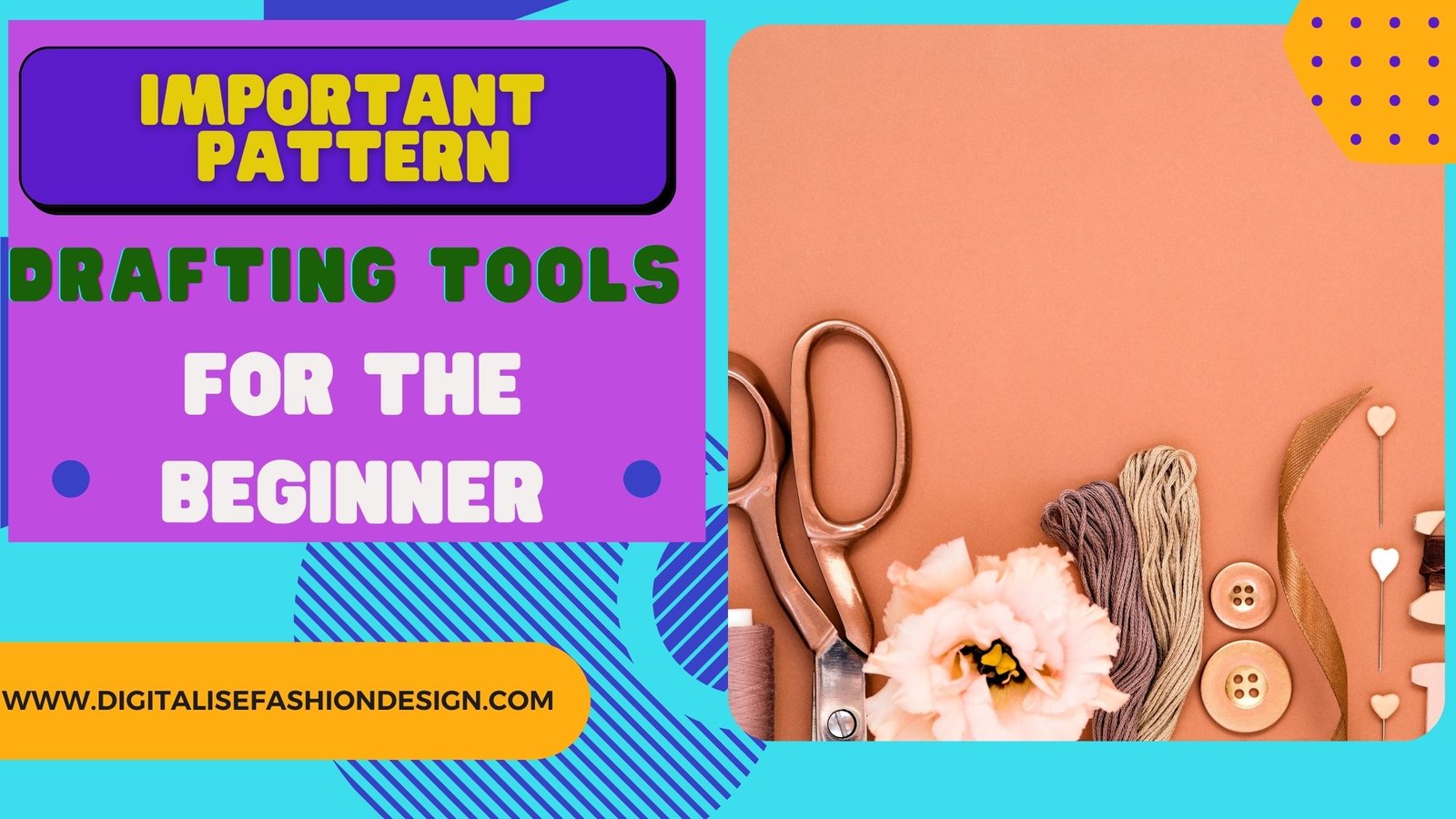In this blog post, we will explore the must-have dress pattern drafting tools for beginners.
Are you a budding fashion designer or someone who loves creating their own clothes like me?
If so, understanding the art of dress pattern drafting is essential.
Dress pattern drafting allows you to transform your design ideas into tangible garments.
To embark on this creative journey, you will need a set of essential tools that will assist you in the process.
So, let’s discover the tools that will help bring your fashion visions to life.

Table of Contents
- Introduction
- Essential Tools for Pattern Drafting
- Optional Tools for Advanced Pattern Drafting
- Tips for Using Pattern-Drafting Tools
- Conclusion
- FAQs (Frequently Asked Questions)
Introduction
Pattern drafting is the process of creating a blueprint or template for a garment.
It involves taking precise measurements, making calculations, and using various tools to draw the pattern pieces on paper.
The accuracy of the pattern directly affects the fit and overall look of the final garment.
As a beginner, having the right tools will make the pattern-drafting process easier and more enjoyable.
Essential Tools for Pattern Drafting.
Measuring Tape
A flexible measuring tape is a must-have tool for pattern drafting. It allows you to take accurate body measurements, ensuring that your patterns fit perfectly. Look for a measuring tape with both metric and imperial measurements for versatility.
Rulers and Curves
A clear, transparent ruler with markings in inches and centimeters is essential for drawing straight lines and measuring distances on your pattern. Additionally, curved rulers like hip curves and French curves help create smooth lines for armholes, necklines, and other curved areas.
Pattern Paper
OTHER RELEVANT BLOG POST
Pattern paper is a lightweight, translucent paper that allows you to trace and transfer your pattern pieces accurately. It is durable enough to withstand repeated use and transparent enough to see through when aligning pattern markings.
Tracing Wheel
A tracing wheel is used to transfer pattern markings from the pattern paper onto the fabric. It has a serrated wheel that leaves tiny marks as it rolls over the paper, transferring the pattern details onto the fabric.
Pattern Notcher
A pattern notcher is a tool used to create small, precise notches on the edges of pattern pieces. These notches help align the pieces correctly during sewing, ensuring a perfect fit.
Marking Tools
You’ll need marking tools like tailor’s chalk, fabric markers, or disappearing ink pens to mark important points and lines on your pattern and fabric. These markings serve as guidelines for cutting, sewing, and aligning pattern pieces.
Seam Allowance Guide
A seam allowance guide is a transparent ruler or tool that helps you add consistent seam allowances to your pattern. It ensures accuracy and eliminates guesswork when sewing your garment.
French Curve
A French curve is a tool used to create and refine curved lines in your pattern. It is especially useful for shaping armholes, necklines, and other curved areas of your garment.
Pattern Hooks
Pattern hooks are handy for organizing and storing your pattern pieces. They keep your patterns neat, prevent wrinkling, and make it easy to find the pieces you need for a specific project.
Pattern Weights
Pattern weights hold down your pattern paper while you trace or cut the pattern pieces. They prevent shifting and ensure accuracy during the pattern-drafting process. You can use specialized pattern weights or make your own with household items like washers or small bean bags.
Optional Tools for Advanced Pattern Drafting
Grading Rulers
Grading rulers are used to scale patterns up or down, making them larger or smaller based on different sizes. They are essential for adjusting patterns to fit different body measurements accurately.
Hip Curve Ruler
A hip-curve ruler is designed specifically for shaping and adjusting hip-curve patterns. It ensures a smooth and accurate fit around the hips, one of the critical areas for garment comfort.
Adjustable Dress Form
An adjustable dress form is a useful tool for draping and fitting garments. It allows you to create custom-sized patterns by adjusting the dress form to match your body measurements.
Tracing Paper
Tracing paper is an alternative to pattern paper, especially when you want to preserve your original patterns. It allows you to trace the pattern pieces without cutting into the original, making it easy to reuse them for future projects.
Cutting Tools
While not directly related to pattern drafting, having a good pair of fabric scissors and a rotary cutter with a cutting mat will greatly facilitate the process of cutting your pattern pieces accurately.
Tips for Using Pattern-Drafting Tools
- Always double-check your measurements and markings to ensure accuracy.
- Keep your tools organized and easily accessible for a smooth workflow.
- Practice using the tools on scrap fabric or paper before working on your actual project.
- Store your patterns and tools in a clean and dry space to prevent damage.
- Follow tutorials and online resources to learn different pattern-drafting techniques and tricks.
Conclusion
Pattern drafting is a valuable skill for anyone interested in sewing and fashion design.
By investing in essential pattern-drafting tools, beginners can enhance their creativity and create well-fitting garments.
Remember to start with the basics, gradually adding more advanced tools as you gain experience.
With practice and the right tools, you’ll be able to design and sew beautiful garments tailored to your unique style and measurements.
FAQs (Frequently Asked Questions)
- Q: How long does it take to learn pattern drafting as a beginner? A: The time required to learn pattern drafting varies depending on your dedication, practice, and prior sewing knowledge. With consistent effort, you can start drafting simple patterns within a few weeks.
- Q: Can I use regular paper instead of pattern paper? A: Regular paper is not recommended for pattern drafting as it may tear or become distorted during use. Pattern paper is specifically designed for this purpose and offers durability and transparency.
- Q: Do I need all the optional tools mentioned for advanced pattern drafting? A: The optional tools mentioned for advanced pattern drafting are not essential for beginners. They are beneficial for specific techniques and advanced pattern adjustments.
- Q: Where can I find tutorials on pattern drafting? A: You can find pattern-drafting tutorials on sewing blogs, YouTube channels, and online sewing communities. Many books and online courses also cover pattern drafting in detail.
- Q: Can I draft patterns for commercial use with these tools? A: Yes, the pattern-drafting tools mentioned in this article can be used for personal and commercial purposes. However, it’s essential to respect copyright and licensing restrictions when using commercial patterns.








